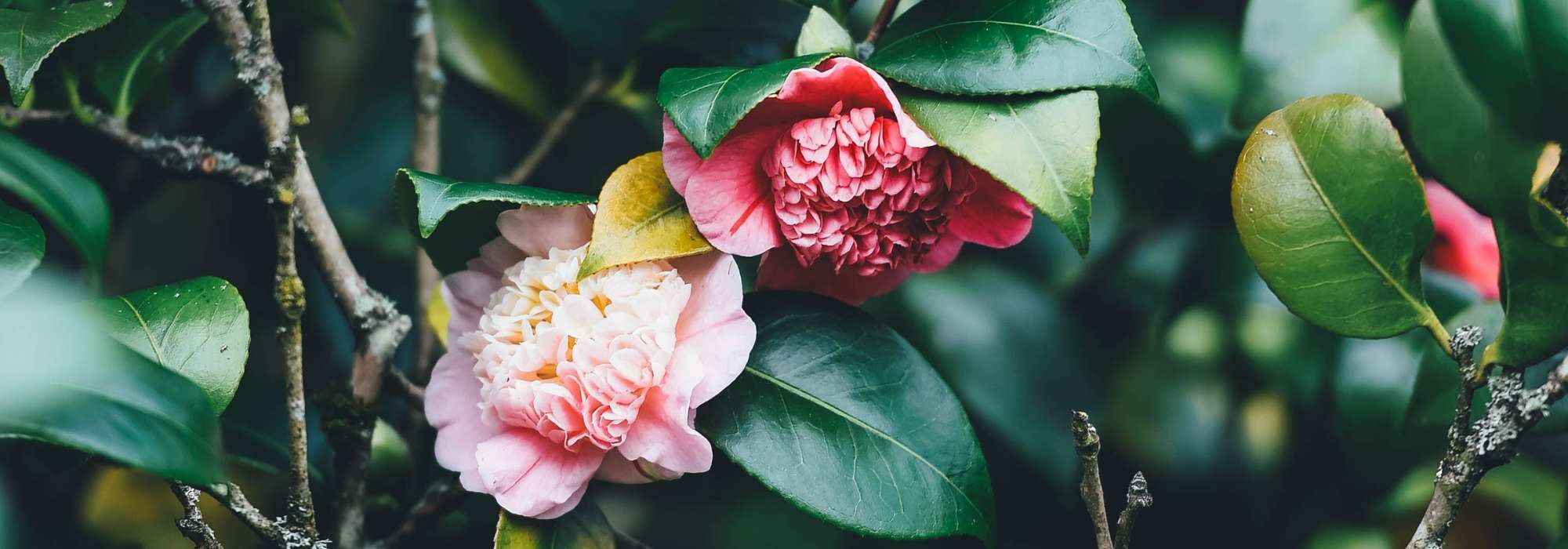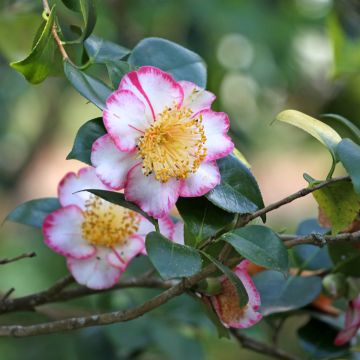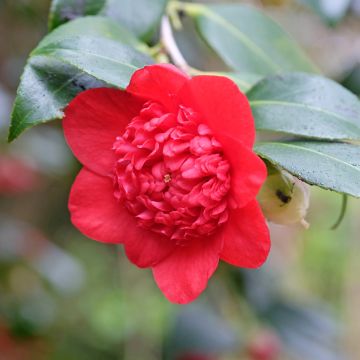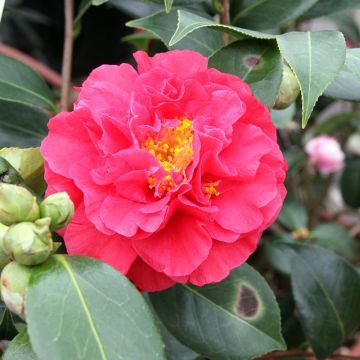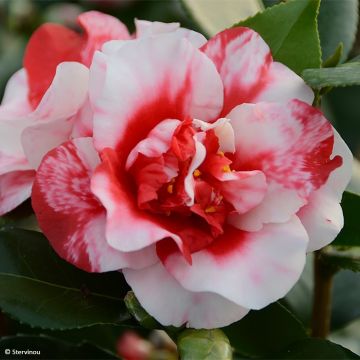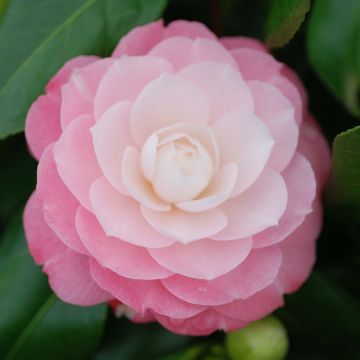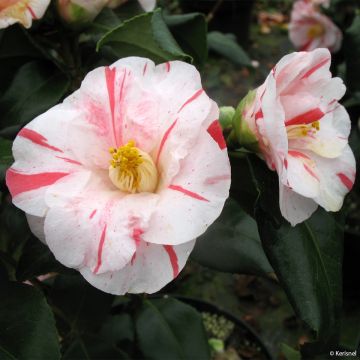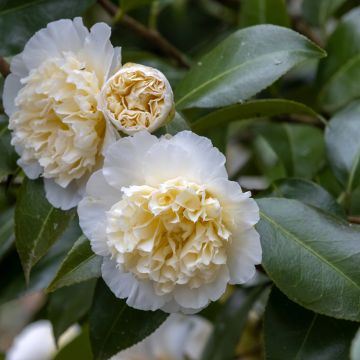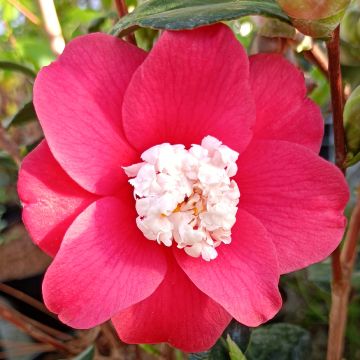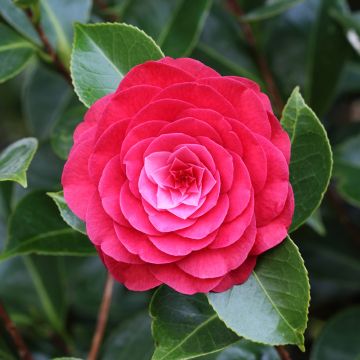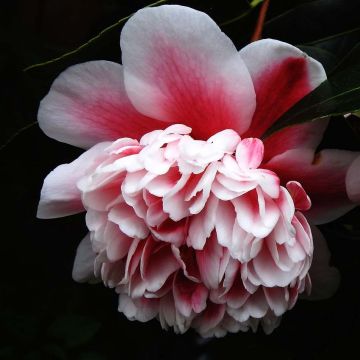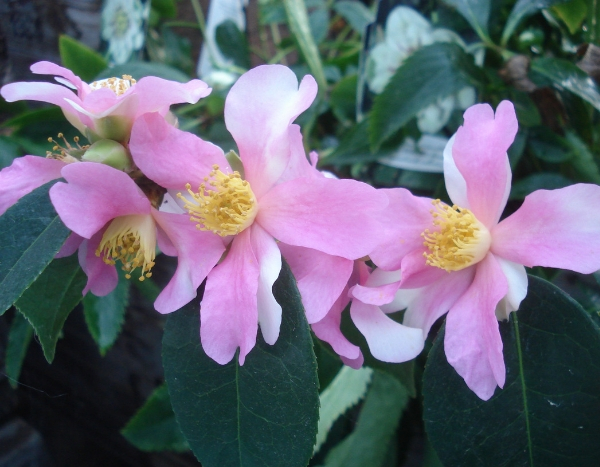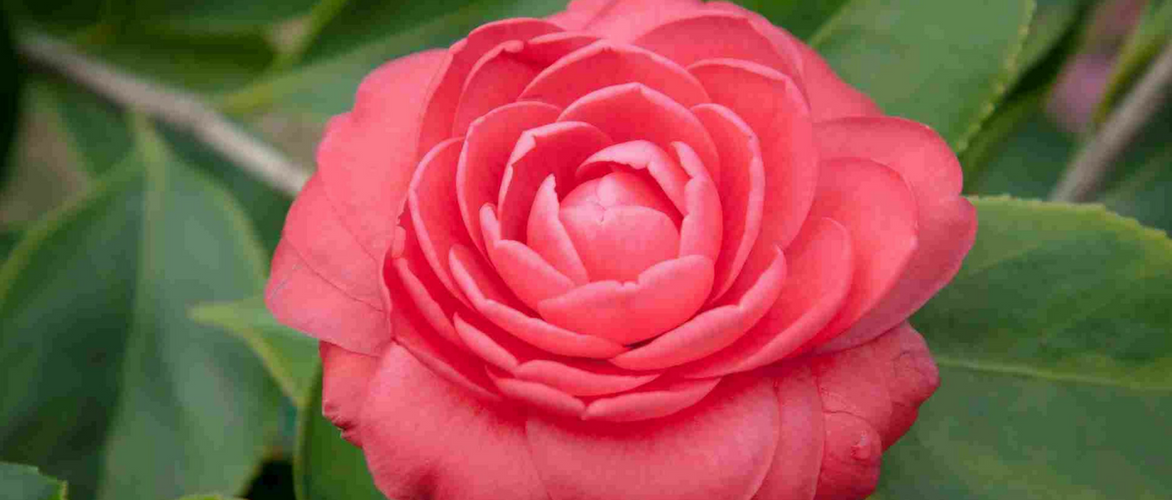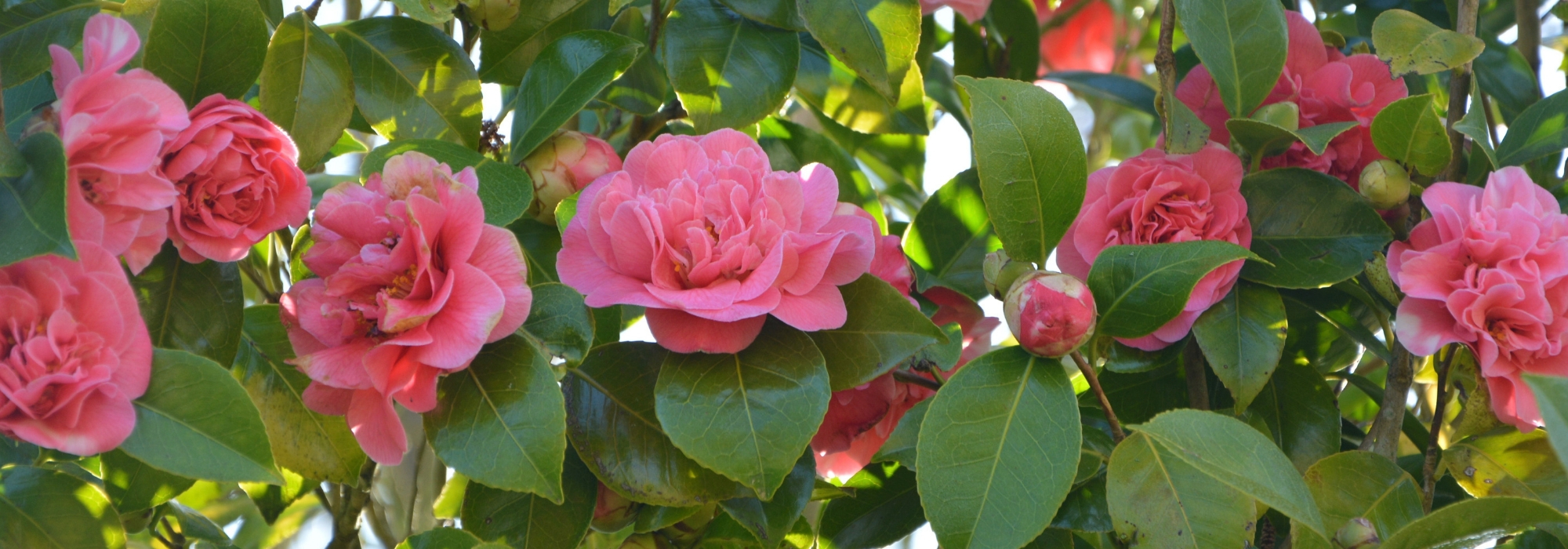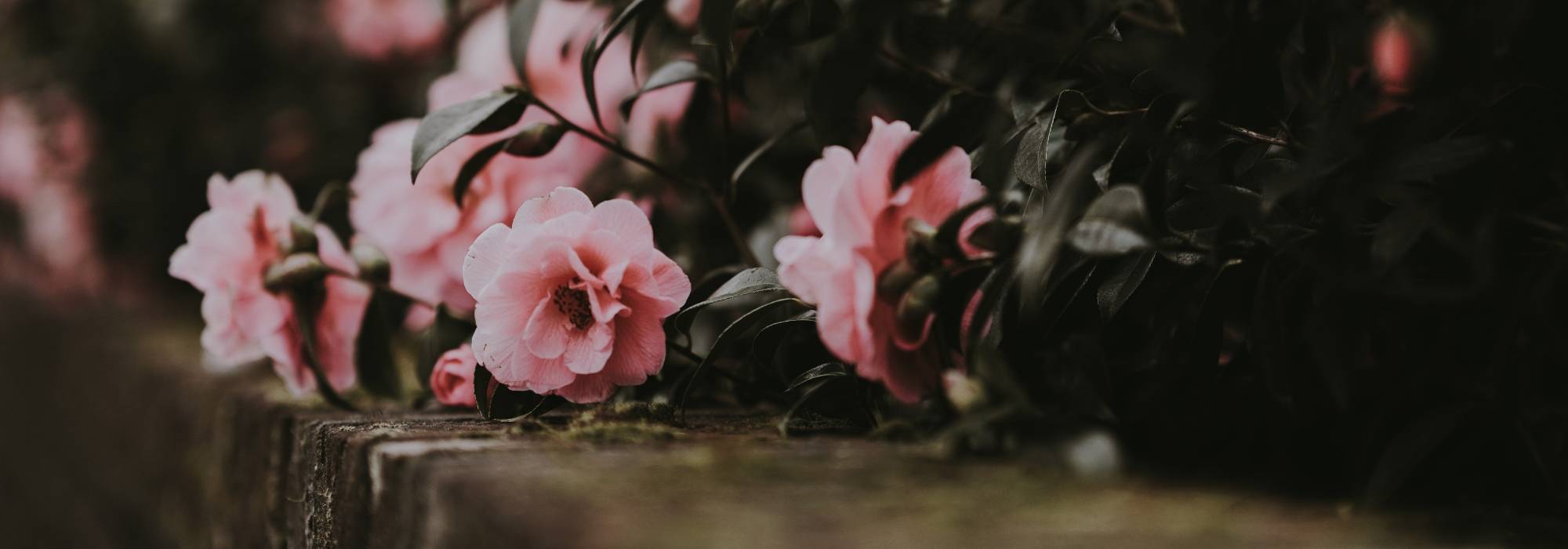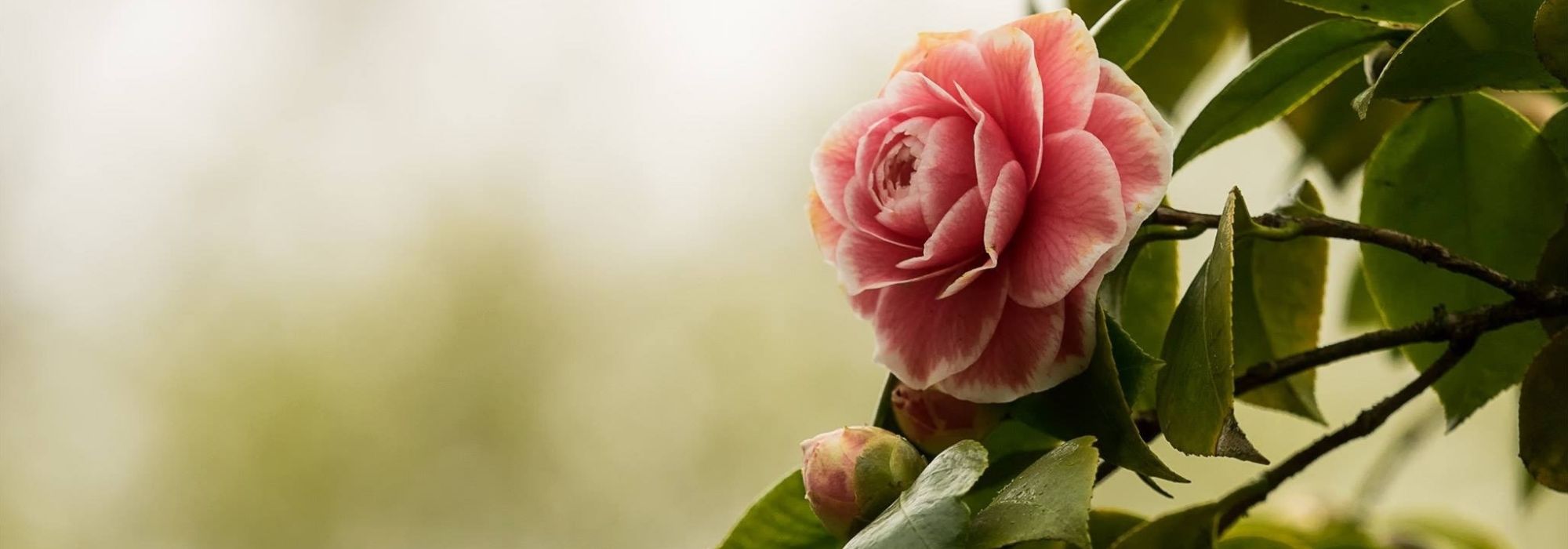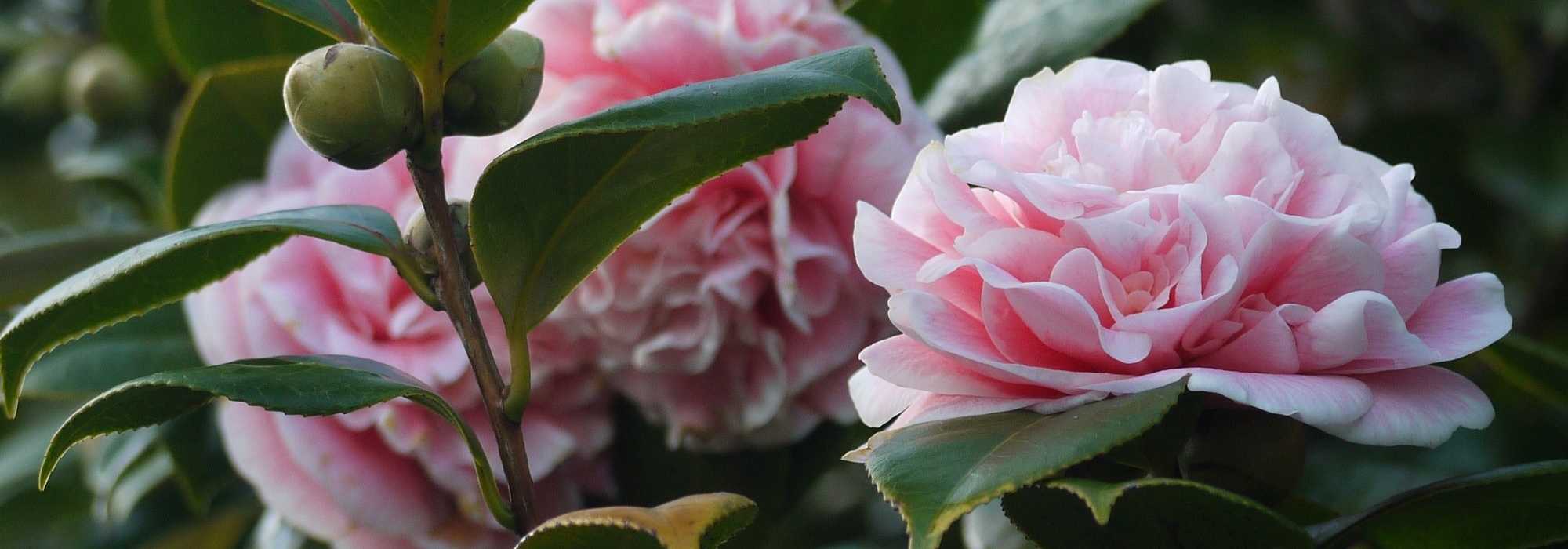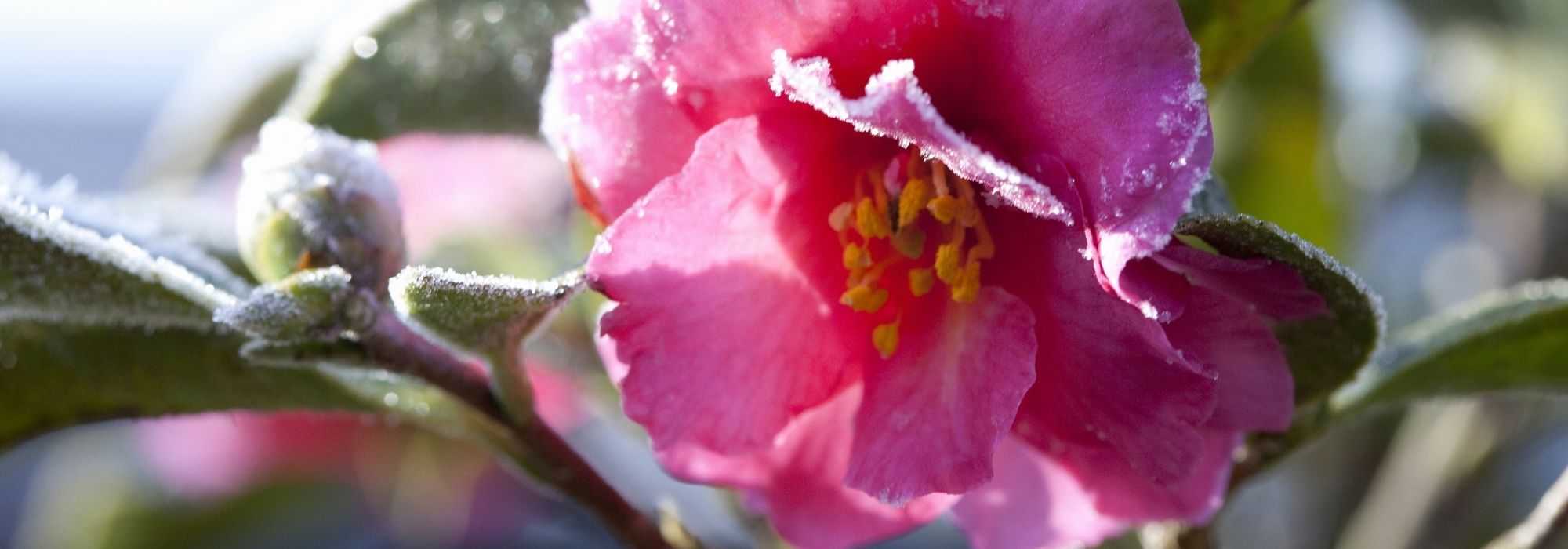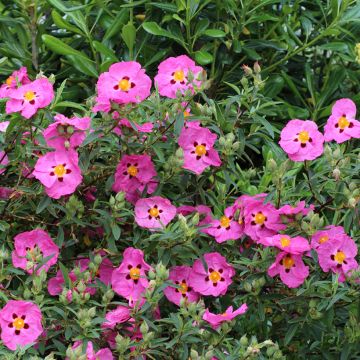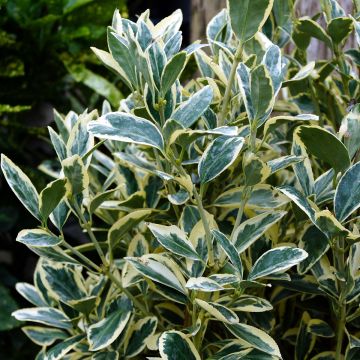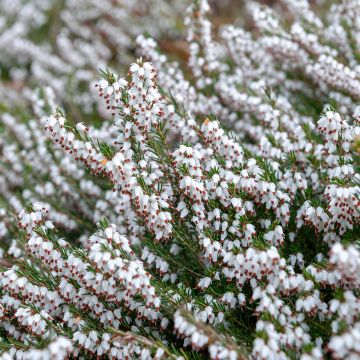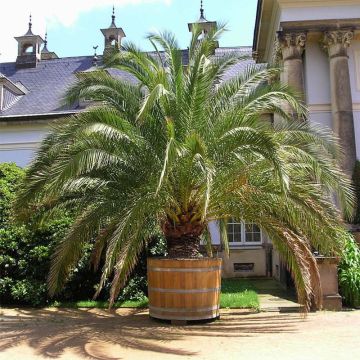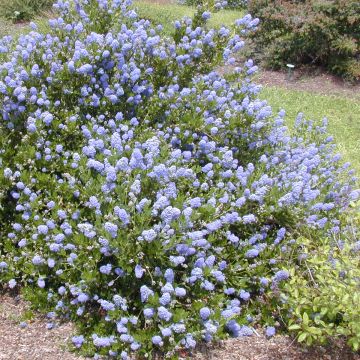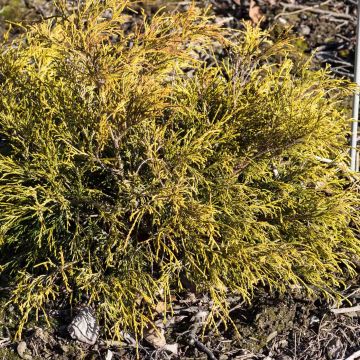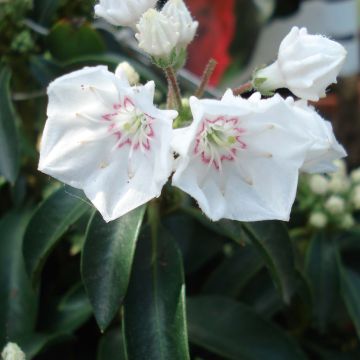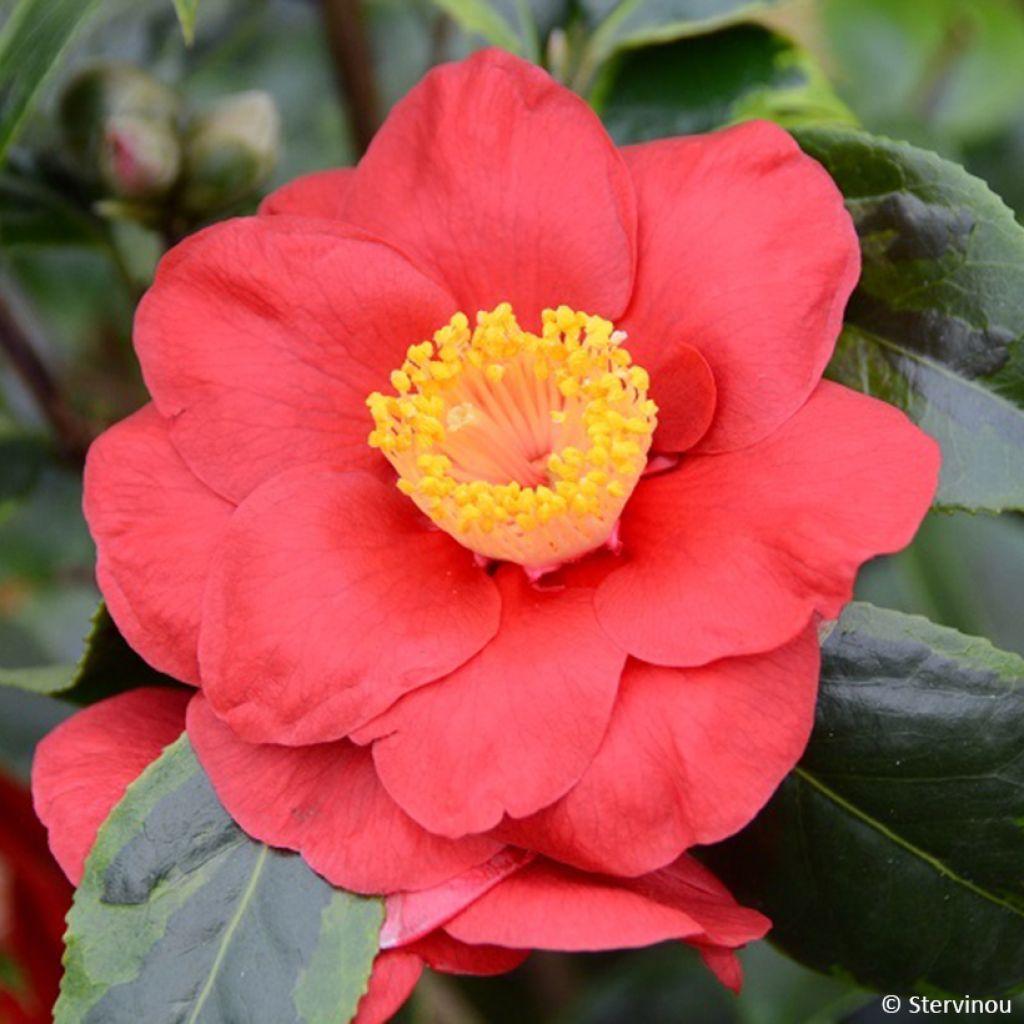

Camellia japonica Painter's Palette - Japanese Camellia
Camellia japonica Painter's Palette - Japanese Camellia
Camellia japonica Painter's Palette®
Japanese Camellia, Rose of winter
Special offer!
Receive a €20 voucher for any order over €90 (excluding delivery costs, credit notes, and plastic-free options)!
1- Add your favorite plants to your cart.
2- Once you have reached €90, confirm your order (you can even choose the delivery date!).
3- As soon as your order is shipped, you will receive an email containing your voucher code, valid for 3 months (90 days).
Your voucher is unique and can only be used once, for any order with a minimum value of €20, excluding delivery costs.
Can be combined with other current offers, non-divisible and non-refundable.
Home or relay delivery (depending on size and destination)
Schedule delivery date,
and select date in basket
This plant carries a 24 months recovery warranty
More information
We guarantee the quality of our plants for a full growing cycle, and will replace at our expense any plant that fails to recover under normal climatic and planting conditions.
Would this plant suit my garden?
Set up your Plantfit profile →
Description
Camellia japonica 'Painter's Palette' is a variety of ornamental Japanese Camellia with a beautiful late winter flowering and distinctly original variegated foliage. This slow-growing bush with an upright habit is decorative throughout the seasons. Its young spring shoots emerge in shades of orange, while the mature foliage displays a cream-white variegation contrasting with dark green. From February, large red flowers enhanced by a golden heart bloom on the plant. Thriving in Atlantic climates with moist acidic soils, it can also be easily grown in a container in colder climates or where the soil has limestone.
Camellia is the most represented genus in terms of species in the small Theaceae family. This family includes about ten genera, some ornamental, such as Franklinia and Gordonia, parents of the hybrid x Gordlinia, and a species of Camellia with high cultural and economic value, Camellia sinensis. Tea is made with the young leaves of this bush. Among ornamental Camellias, several species are widespread, the main one being C. japonica, native to Japan and Korea, and cultivated in China for over 4700 years. In Europe, where the first plant was introduced in 1739 by Baron Robert James Petre, it enjoyed its heyday as a winter garden plant during the first half of the 19th century. Today, breeders continue to focus on this genus and introduce innovative varieties to the market.
This is the case with 'Painter's Palette®' derived from a seedling of the variety 'San Dimas', with bright red flowers. This variegated foliage mutation was obtained by the Breton nursery Stervinou, established in Brest in the 1940s and specialising in acid soil plants. This bush has an upright habit, with slender branches and brown bark that start almost vertically before flaring upwards. Growing quite slowly, this Camellia will reach approximately 1.40 m in height and 80 cm in width after 10 years of cultivation. Its main originality lies in its variegated foliage, unusual for Japanese Camellias. In spring, new shoots emerge in shades of orange, possibly mixed with pink, before the leaves take on their final colouration. This will be dark green in the centre, with lighter green gradients, all surrounded by an irregular margin of varying size depending on the leaves, ranging from cream white to yellow. The evergreen foliage is ornamental throughout the seasons, adding an extra decorative touch to the bush. The flowering is as splendid as in the original variety. From February, large bright red flowers measuring 7 to 8 cm in diameter bloom on the variegated vegetation, fully justifying the name "Painter's Palette" of this plant. The semi-double corollas consist of about ten rounded petals open horizontally, revealing a golden heart made of white stamens topped with bright yellow anthers (due to the pollen they contain). The colour contrast is absolutely stunning at a time when the garden has not yet emerged from winter, and the flowering lasts until March-April depending on the climate and year.
Camellia 'Painter's Palette®' elegantly renews the genus with its original and attractive foliage. If your soil is limestone or your climate too cold in winter, you can easily grow it in a container, in ericaceous planting compost, sheltering it in a cool and bright room during periods of severe cold. Where it finds the conditions it appreciates, you can plant it as a hedge or in a border with acid soil plants with which it shares the same needs. To create a winter-interest scene, plant Hamamelis, or Witch Hazels, also of great ornamental value, at the back of the border. In winter, they produce spider-like flowers composed of thin yellow, orange, or purple filaments depending on the variety. And in autumn, their foliage takes on remarkable fiery colours. Garrya elliptica 'James Roof' will also be a good choice, with its persistent grey-green foliage harmonising with that of your Camellia, and its spectacular winter flowering in long whitish catkins. To accompany the start of spring, you can also plant a Stachyurus praecox, a little-known but highly decorative shrub with clusters of small yellow flowers and stunning autumnal colourations. These different plants do not tolerate limestone but do not require very acidic soil either, thriving in neutral to slightly acidic soils.
Plant habit
Flowering
Foliage
Botanical data
Camellia
japonica
Painter's Palette®
Theaceae
Japanese Camellia, Rose of winter
Cultivar or hybrid
Other Japanese Camellia
View all →Planting and care
Camellia 'Painter's Palette' should be planted in a fairly shaded location sheltered from cold and drying winds. However, you can grow it in full sun in northern Atlantic areas, but the roots must remain moist. Plant it in moist, humus-bearing, acidic, and well-drained soil. Pure peat soil should be avoided, as it is too poor in nutrients and does not rehydrate well once dry. The bush should not be planted too deeply, with the top of the root ball covered by 3 cm. Its hardiness allows it to withstand short frosts of around -12°C, once well established, although the flowering may suffer and be destroyed. In winter, cover it with a 5 to 7 cm thick mulch composed of leaf compost and crushed bark. Beware of late frosts that can damage the flowers and buds. During dry periods, water the bush to prevent the dropping of flower buds. It is recommended to plant the camellia in autumn to promote good rooting and better flowering in the first year. Possible diseases include chlorosis due to limestone, brown spots caused by burns on leaves in south-facing exposure, sooty mould, scale insects, and vine weevils.
Planting period
Intended location
Care
Planting & care advice
This item has not been reviewed yet - be the first to leave a review about it.
Similar products
Haven't found what you were looking for?
Hardiness is the lowest winter temperature a plant can endure without suffering serious damage or even dying. However, hardiness is affected by location (a sheltered area, such as a patio), protection (winter cover) and soil type (hardiness is improved by well-drained soil).

Photo Sharing Terms & Conditions
In order to encourage gardeners to interact and share their experiences, Promesse de fleurs offers various media enabling content to be uploaded onto its Site - in particular via the ‘Photo sharing’ module.
The User agrees to refrain from:
- Posting any content that is illegal, prejudicial, insulting, racist, inciteful to hatred, revisionist, contrary to public decency, that infringes on privacy or on the privacy rights of third parties, in particular the publicity rights of persons and goods, intellectual property rights, or the right to privacy.
- Submitting content on behalf of a third party;
- Impersonate the identity of a third party and/or publish any personal information about a third party;
In general, the User undertakes to refrain from any unethical behaviour.
All Content (in particular text, comments, files, images, photos, videos, creative works, etc.), which may be subject to property or intellectual property rights, image or other private rights, shall remain the property of the User, subject to the limited rights granted by the terms of the licence granted by Promesse de fleurs as stated below. Users are at liberty to publish or not to publish such Content on the Site, notably via the ‘Photo Sharing’ facility, and accept that this Content shall be made public and freely accessible, notably on the Internet.
Users further acknowledge, undertake to have ,and guarantee that they hold all necessary rights and permissions to publish such material on the Site, in particular with regard to the legislation in force pertaining to any privacy, property, intellectual property, image, or contractual rights, or rights of any other nature. By publishing such Content on the Site, Users acknowledge accepting full liability as publishers of the Content within the meaning of the law, and grant Promesse de fleurs, free of charge, an inclusive, worldwide licence for the said Content for the entire duration of its publication, including all reproduction, representation, up/downloading, displaying, performing, transmission, and storage rights.
Users also grant permission for their name to be linked to the Content and accept that this link may not always be made available.
By engaging in posting material, Users consent to their Content becoming automatically accessible on the Internet, in particular on other sites and/or blogs and/or web pages of the Promesse de fleurs site, including in particular social pages and the Promesse de fleurs catalogue.
Users may secure the removal of entrusted content free of charge by issuing a simple request via our contact form.
The flowering period indicated on our website applies to countries and regions located in USDA zone 8 (France, the United Kingdom, Ireland, the Netherlands, etc.)
It will vary according to where you live:
- In zones 9 to 10 (Italy, Spain, Greece, etc.), flowering will occur about 2 to 4 weeks earlier.
- In zones 6 to 7 (Germany, Poland, Slovenia, and lower mountainous regions), flowering will be delayed by 2 to 3 weeks.
- In zone 5 (Central Europe, Scandinavia), blooming will be delayed by 3 to 5 weeks.
In temperate climates, pruning of spring-flowering shrubs (forsythia, spireas, etc.) should be done just after flowering.
Pruning of summer-flowering shrubs (Indian Lilac, Perovskia, etc.) can be done in winter or spring.
In cold regions as well as with frost-sensitive plants, avoid pruning too early when severe frosts may still occur.
The planting period indicated on our website applies to countries and regions located in USDA zone 8 (France, United Kingdom, Ireland, Netherlands).
It will vary according to where you live:
- In Mediterranean zones (Marseille, Madrid, Milan, etc.), autumn and winter are the best planting periods.
- In continental zones (Strasbourg, Munich, Vienna, etc.), delay planting by 2 to 3 weeks in spring and bring it forward by 2 to 4 weeks in autumn.
- In mountainous regions (the Alps, Pyrenees, Carpathians, etc.), it is best to plant in late spring (May-June) or late summer (August-September).
The harvesting period indicated on our website applies to countries and regions in USDA zone 8 (France, England, Ireland, the Netherlands).
In colder areas (Scandinavia, Poland, Austria...) fruit and vegetable harvests are likely to be delayed by 3-4 weeks.
In warmer areas (Italy, Spain, Greece, etc.), harvesting will probably take place earlier, depending on weather conditions.
The sowing periods indicated on our website apply to countries and regions within USDA Zone 8 (France, UK, Ireland, Netherlands).
In colder areas (Scandinavia, Poland, Austria...), delay any outdoor sowing by 3-4 weeks, or sow under glass.
In warmer climes (Italy, Spain, Greece, etc.), bring outdoor sowing forward by a few weeks.






























